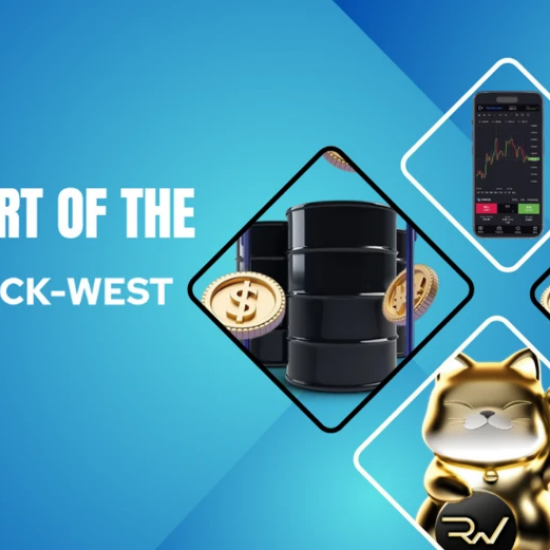Emerging market equities have been the darling asset class de jour in 2017, mainly in Asia and Latin America, despite the March FOMC rate hike, a US Dollar Index at or above 100 and a mini-swoon in crude oil after a Saudi-Russian output cut spat. Earnings growth (India/Thailand) a stabilized currency (China), policy reforms (India, Brazil, Indonesia) local interest rate cuts (Brazil) and lower US protectionist policies (Mexico) led the double digit windfall in the Third World dark alleys of the planet. However, unlike Alfred E. Neuman, I worry and I am paid to worry. I traded (and survived!) Thailand ’97, Russia ’98, Argentina 2001, the GCC/India in 2008, the Ursa Maxima in the asset class between 2011 and 2016. So what could go wrong, other than a US nuclear war with North Korea or a fascist/Marxist Leninist France on May 7, twin tail risks that investors still underprice, if option skews are any guide?
A spike in Uncle Sam debt yields could ignite King Dollar if US economic growth and inflation accelerate this summer. This is not to suggest that emerging markets cannot outperform Wall Street and Europe when the Fed moves into a rate hike cycle, as the Yellen Fed did in the December FOMC. Nor can a wobbly China yuan derail the party – after all, the Peoples Bank of China spent $1 trillion in foreign exchange reserves trying to offset the $700 billion in capital flight from the Middle Kingdom. As a rule, if locals flee their own country, I flee with them. Success in emerging markets necessitate that I must lose no opportunity to broaden the continually expanding frontiers of my own ignorance. So when faced with Rumsfeld’s unknown unknowns or Dr. Taleb’s “black swan”, I act like the Victorian surgeons of the Crimean war (Tsar Nikolai Pavlovich not Putin’s war!): when in doubt, Matti, cut it out! No guts, no glory, then taught us at Wharton in class but the weekend in South Philly taught me, no guts, no gorii! A stop loss, like compound interest, is the most valuable thing in the universe when taking a random walk down Wall Street.
I am no scholar of China but I know the Trump White House has no choice but to deal with the $500 billion US trade deficit, $350 billion due to the gnomes of Beijing. This means sometime this summer, when the June FOMC rate hike looms, America First leads to a Chinese and thus emerging market sell off. So sell in May and go away? Yes, even if Macron or (quell horreur!) Fillon wins the Elysee Palace.
True, money talks, money even shouts in Xi Jinping’s China so another epic credit bubble has goosed economic growth to 6.9%. If China has a hard landing, not all the king’s horses and not all the king’s men can put together the emerging markets Humpty Dumpty again.
I expect the ten year US Treasury bond note yield to rise back to 2.6% as the financial markets realize that there is no recession risk in the US at a time when the unemployment rate has fallen to 4.5%. The Yellen Fed will deliver two FOMC rate hikes and begin balance sheet shrinkage in 2017. France will not exit the EU even if Marine Le Pen wins, which I believe she will not and cannot. Georgia’s House election was another Dem failure and demonstrates that it is silly to diss Abu Ivanka’s legislative agenda in Congress. Net net, a steeper US Treasury yield curve!
Emerging markets banks poised to benefit from a new lending cycle, lower funding costs and a fall in provisions/cost of risk are ideal country proxies. This means Banco Itau Unibanco in Brazil, Bank Rakyat in Indonesia, Bangkok Bank in Thailand, Sberbank in Russia, Banorte in Mexico, Habib Bank in Pakistan and SAMBA in Saudi Arabia. Emerging markets banks trade at 7.5 times earnings and 0.9 times book value in the embryonic stages of an earnings momentum cycle. Ex China, the sector offers returns on equity (ROE) at 14.5%. Yet when the macro cycles for emerging markets banks turns, as it did in early 2016, this sector is a license to print money. Note that my strategy calls on Russia’s Sberbank and Argentina’s Banco Macro earned 100% plus profits while the calls on India’s HDFC/ICICI and Pakistan’s Habib Bank earned 40%. No guts, no glory!
Currencies – The bearish case for the South African Rand
South African President Jacob Zuma’s decision to sack Finance Minister Pravin Gordhan after he dared to question his relationships with the corrupt Gupta brothers led to a sharp fall in the rand, acceleration of capital flight and a S&P sovereign debt credit downgrade to junk. Unfortunately, incompetence and endemic corruption in the Rainbow Nation means squat as long as Zuma packs the ANC with loyalists and Zulu tribal powerbrokers. Zuma will stay in power until the 2019 election and inflict other malign black swan decisions on South Africa. There is zero chance that Zuma will be replaced by a reformer. The ANC does not do reform.
The South African economy will remain mired in recession in 2017 despite the surge in gold, diamond and platinum prices and the epic slump in the rand since 2014. The ANC and the far-left trade unions will ramp up “crony capitalism” ahead of the election, symbolized by the madness of the trillion rand Enskom nuclear energy plants scheme. Yet the plunge in the rand and the Johannesburg stock exchange has created new, profitable realities.
I expect the South African rand to fall to 14 in the next three months as incoming Finance Minister Malusi Gigaba, a Zuma loyalist, lacks credibility in the City of London (which financed the great Rand gold/diamond strikes of the Victorian era that forged the colossus De Beers/Anglo American). In any case, a populist ANC, a Reserve Bank unable to match Fed rate hikes and rising sovereign credit risk (Zuma/Malema risk) premium means the path of least resistance for the ZAR is lower against the US dollar. Gigaba will be forced to jettison Gordhan’s fiscally prudent 2018 budget, a scenario that could make the rating agencies go ballistic again. Economic populism, a loyalist Cabinet, a socialist ANC elite, black empowerment, vested interest, a junk sovereign rating, a steep rise in borrowing costs in the international capital markets and the construction of nuclear power white elephants that could swallow 20% of GDP anchors my belief that the South African rand, the currency of Azania (though not Agrabah!) is a short on any Gigaba inspired “relief rally”. The time to bottom fish in South Africa was in January 2016, on the eve of a 23% rise in the rand as the trade deficit narrowed to 3% and Gordhan’s reforms was greenlighted by international bankers, the IMF and the World Bank. Now Zuma has won and Gordhan has lost. So it is Nkosi sikelel Iafrika. God bless Africa. My mantra de jour is cry the beloved country and short the beloved currency though only after consulting my Solomonic friend and financial oracle over lunch at Ustadi. Who benefits from a week rand? Sasol!
If the Turkish lira was my least favorite emerging market currency long before Trump’s Tomahawk missile strike on Syria and Erdogan’s April 16 referendum, I was hugely bullish on the Mexican peso at 20. The Mexican peso has risen to 18.4 as I write, a phenomenal 18% rise in only three months, a beneficiary of the Trump White House’s failure to repeal Obamacare, a plunge in US Treasury bond yields, the prospect of only two more Fed rate hikes in 2017 and that Saudi Arabia will roll over last November’s OPEC quota cut pact in May.
I spent my sophomore year summer at Penn in Mexico City, staying at my aunt’s house in Colonia Polanco, near Chapultepec Park and traveling from the jungle sea resorts of the Yucatan (Cozumel, Cancun, Merida) to the vastness of the ancient Aztec capital. A lifelong gift from that long-ago summer was a command of Urdu accented Spanish (the Argentina call it Castilian but a world language is really a dialect with an army!) and a fascination with banking crises and global sovereign debt markets. So the real ballast behind the surge in the Mexican peso was not Trump, Ryan or even converted NAFTA amigo Wilbur Ross but the 0.75% rise in the Banco de Mexico’s policy borrowing rate and the ascendency of the Goldman Sachs twins (Gary Cohn/Steve Mnuchin) as the US President’s new financial capo di tutti capi. The Mexican peso can well rise to 18 before fears of a June FOMC rate hike again induce profit taking. So, hail to the lovely land of mariachi bands, Diego Rivera and Frida Kahlo, the most amazing, pre-Columbian art museum in the world, the Mayan pyramid of the magician at Chichen Itza, Coco Bongo at Cancun, the writers Carlos Fuentes and the great essayist of New Spain Octavio Paz. It is simply not possible to trade the currency of a nation I do not know or love!
Stock Pick – The Blackstone Group trade idea was a winner!
I have made no secret of my conviction that Blackstone Group LP, the world’s largest private equity and alt-asset management colossus, was grossly undervalued at 27 in January. I was right. Blackstone shares soared to 31 on Friday as economic net income (realized and unrealized gains) rose to $986 million, more than double the $370 million in 1Q 2016. The investment strategy on Blackstone I reiterated and infinitum in 2017 is now highly profitable in real time.
Blackstone took advantage of a fabulous IPO market and nosebleed asset valuations on Wall Street to cash out on more deals than at any time in its 32 year history. Private equity trade sales alone were $6.2 billion in the first quarter, led by shale oil explorer Kosmos Energy and Internet security firm Optiv.
Real estate is now Blackstone’s biggest global business. Its single most profitable deal, the leveraged buyout of Hilton Hotels, chronicled in this column, has been a $10 billion windfall for the firm. Blackstone finally sold its last 25% stake in Hilton Worldwide Holdings to Chinese conglomerate HNA. I was relieved to read Blackstone slashed its holdings in London office (leprosy!), Sydney and Tokyo residential (overvalued!). Blackstone had made the property killing of a lifetime after Jon Gray bought 50,000 US homes in the post Lehman housing bust in 2009-10, renovated/rented its portfolio and floated it on Wall Street as the Invitation Homes real estate investment trust IPO.
Blackstone’s multiple deal exits now mean $1.23 billion in deal profits, management/performance fees, up from $394 million a year ago. This is amazing, magnifique, mumtaaz, wunderbar! Even though Blackstone is the world’s largest owner of commercial property, its real estate sales last quarter were 2.6 times cost Blackstone also took advantage of the collapse of energy assets and post Brexit UK assets in 2016 to make some brilliant acquisitions and has raised $240 billion in institutional capital in the global financial markets, more than KKR, Apollo and Oaktree combined. This is Wall Street’s most successful, most profitable alt-asset management money machine.
I had declined Morgan Stanley’s offer of dinner with founder Steve Schwarzman when I was the CIO of a royal investment office in Dubai during the June 2007 IPO of Blackstone. I thought the shares were grossly overvalued and refused to bid. The biggest institutional investors and family offices in the GCC invested in the IPO at $32 a share and were skinned alive when the shares plunged to $5 a share. I not only declined to invest in Blackstone but even wrote a successive column in this newspaper warning my buy side peers in the GCC not to do so, even at the cost of angering my friends at Morgan Stanley, who also gifted the region such dud deals as Depa Interiors, Ren Ren, which lost 90% of their post IPO value. History records that investors would have been infinitely better off investing in my strategy ideas published in Khaleej Times than investing in the IPO’s “gifted” to the GCC by Wall Street investment banks and local private equity (shops/Ponzi schemes)! This is not gloating. It is simply cold, hard fact that can be easily verified by investors.
Even though the Euro is at 1.07 and French banks rose 2% in Paris, I am worried about the impact of the latest terror attack on the French election. High voter turn outs can only benefit Marine Le Pen in this historic weekend. A bas le maximum.
The world is mesmerized by the Aramco IPO hype. I am mesmerized by Oman Oil and Salalah Methanal’s pre-IPO placements on the Muscat Stock Exchange. Oman is not a member of OPEC but the sultanate is a pioneer in such key energy technologies as horizontal drilling and has stakes in energy drillers from Budapest to Oslo, Kazhakstan to Houston. When Oman decides to float Petroleum Development (PDO), its state owned oil and gas colossus, I will gladly do cartwheels across the Hajar Mountains (LoL!) to invest in the sultanate’s hottest deal since the Galfar IPO, another triple bagger published in this column in the fateful winter of 2007!







